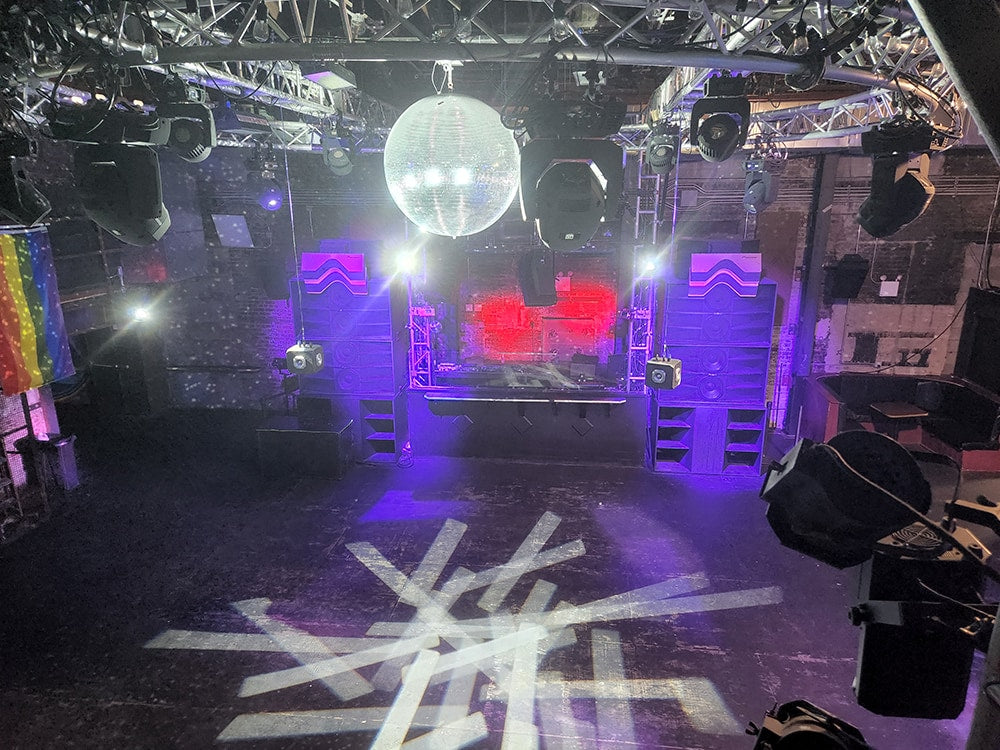When was the last time you went to a really trendy dance club? How about one that caters to an in-the-know young crowd? What about one of New York City’s premier queer venues that features Alaska Thunderf*ck, winner of RuPaul’s Drag Race All Stars, singing Taylor Swift songs? I ask these loaded questions of myself as I quickly approach senior citizenship and prefer to stay home listening to my own records and gear. The last time I heard a pumping club system was, oh, about 40 years ago at Studio 54. I was interested in audio, even as a teen, and tried my best to peek into the DJ booth. It’s an odd thing to want to do instead participating in Studio 54’s other activities, but I wasn’t the only one who was enamored with the equipment. I could have never imagined that I would someday be auditioning a set of speakers designed by someone influenced by the same system at Studio 54.
Like the renowned designers of two-channel home audio components, clubland has its own luminaries. Some of the most legendary names are Alex Rosner and Richard Long. Rosner designed sound systems at New York’s Limelight, Max’s Kansas City, and 1970’s era Copacabana. Long, who once worked under Rosner, went on to create systems at Bond’s International Casino, Paradise Garage, and, the big daddy of them all, Studio 54. However, there’s another designer, a protégé of Long’s who also contributed to the beloved Paradise Garage, a 10,000-square-foot disco with an open-door policy in SoHo that was open from 1977 to 1987. He was the late Gary Stewart, famous for systems in the Hamptons, Ibiza, London, and Singapore.
Shortly before his death in 2012, Stewart achieved new heights through a collaboration with Pioneer Pro Audio. His pre-fab GS-WAVE speaker stack was a departure from most great-sounding club systems which are built from the ground up with custom cabinets and crossovers, but Stewart made it much easier for smaller venues to capture his signature sound without having to undertake a custom build.
Located in Brooklyn, on the border of Williamsburg and Bushwick, 3 Dollar Bill is housed in an old brewery built in 1858. It’s a cavernous brick structure with accents of original wood, metal, and masonry that are incorporated beautifully into a network of several bars, dance areas, and even an expansive yard big enough for the upcoming Oktoberfest. There are sound systems everywhere, but the main dance floor and performance space is where the GS-WAVE towers over the room. This is where I met with 3 Dollar Bill’s production manager, Kris Anton.
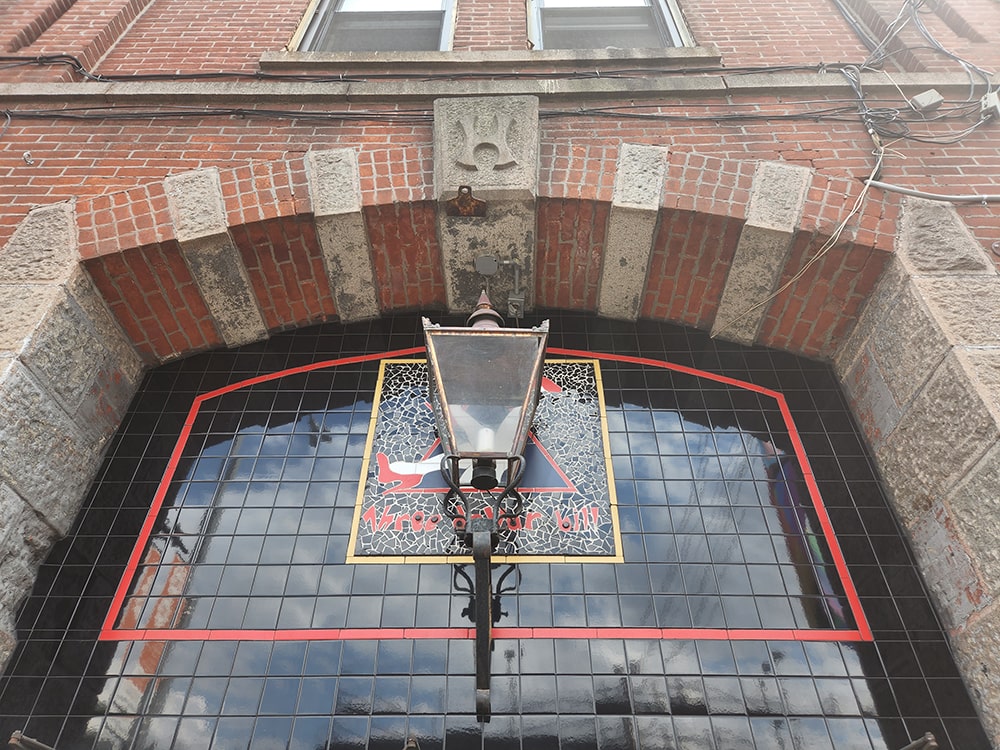
Timeless architecture: the entrance to 3 Dollar Bill.
Kris has spent the last 25 years operating and building light and sound systems for theater, live shows and dance clubs, as well as for bars and restaurants. He’s worked with Big Audio Dynamite, Fishbone, Gibby Haynes of the Butthole Surfers, and numerous drag performers, many of them familiar from appearances on TV shows. Since COVID-19, Kris has been a jack of all trades at 3 Dollar Bill, creating a unique atmosphere and filling nearly every nook and cranny with lights and sound.
Although Kris sent me photos of his showpiece, the two 12-foot, 1,438 lb. speaker stacks, there’s nothing like seeing them in person. Set in a stereo configuration about 15 feet apart and firing onto the dance floor, each GS-WAVE stack is comprised of:
- One 18-inch subwoofer in a folded-horn cabinet.
- Two cabinets containing 2 15-inch drivers for the bass and low midrange.
- Two compression drivers behind an adjustable lens to handle the high-mids and high frequencies.
- Hanging over the dance floor is an associated super tweeter pod with four ultra-high-frequency drivers.
- An optional 275-lb. horn extension is included with each speaker stack to increase bass delivery without the need for additional amplification. However, for Kris’s maximum capacity of 350 people, the horn extenders would overwhelm the room.
Power comes from two 8-channel and five 4-channel Linea Research amplifiers rated at 1,500 watts per channel at 8 ohms. To keep the system functioning efficiently, each amp has onboard DSPs (digital signal processors) to manage the crossover points, EQ, and power requirements for each driver. All the information is fed through a computer in the DJ booth where adjustments can be made. Kris also installed a complete main stage PA system of Pioneer Pro Audio XY-122 2-way speakers (also designed by Gary Stewart) and active JBL arrays. Additional XY-122 fill speakers and 18-inch subwoofers compensate for dead spots in the room and create a surround-sound effect. Using calibration software by System Engineer and his ears, Kris meticulously tunes 32 speakers to the space. With that many speakers, extreme volume is not required to achieve a gut-punching yet well-balanced musical presentation.
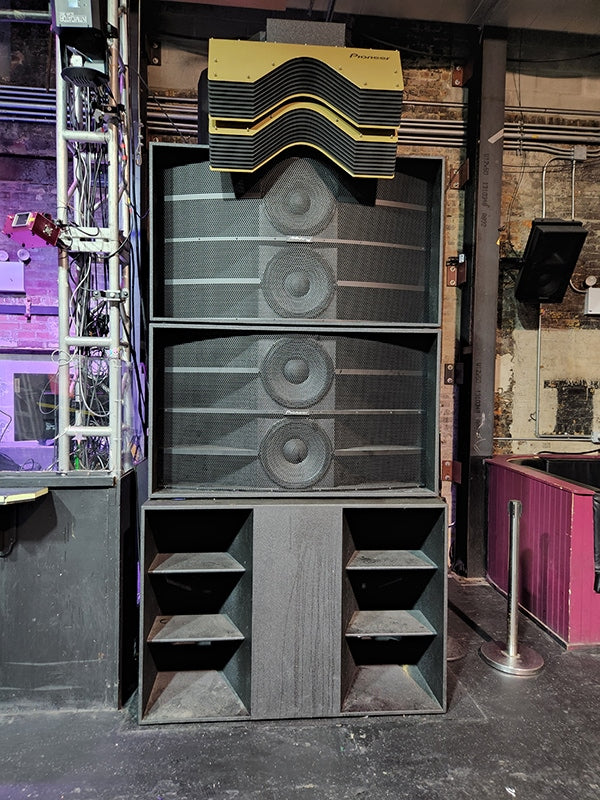
Clarity and balance: the GS-WAVE main speaker stacks.
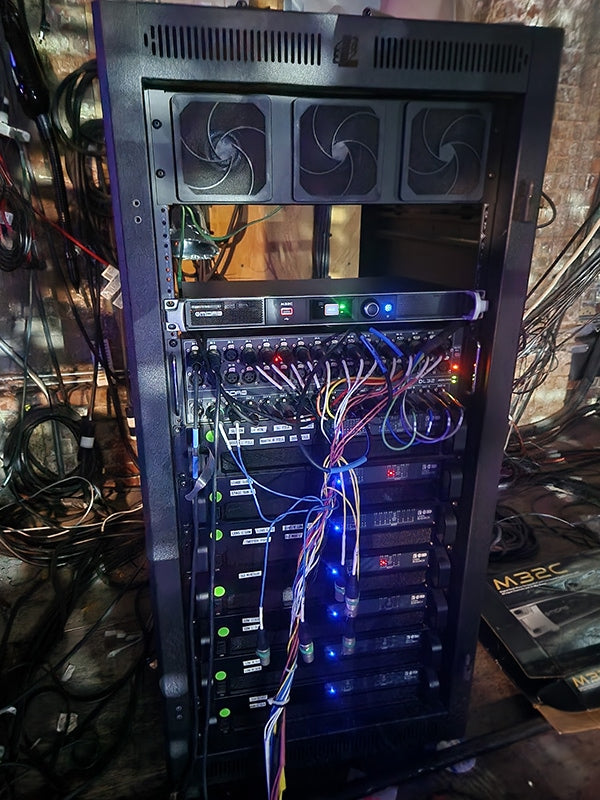
Behind the scenes: Linea Research amplifiers and associated equipment.
I make it seem like Kris did everything by himself, but designing and assembling a system this big requires collaboration. Kris would like to acknowledge Alex Graham and Peter Gotfredsen from audio brokers Purplesound NYC, and David Sullivan from Pioneer Pro Audio. Ron Lorman, a recording engineer with several Miles Davis albums under his belt, lent his expert ears for tuning. But enough tech-talk for now: let’s get back to GS-WAVE.

Sound system designer Kris Anton. Courtesy of Courtney Bradley.
Kris played a number of selections, some rock and some dance music, but what would I play if I had the system to myself? So, Kris pulled up “Spirit of Radio” by Rush and sent it through the stacks. They suddenly transformed from “disco speakers” to the ultimate rock and roll speakers of my teenage dreams. For all their size and power, the GS-WAVEs delivered balanced, defined clear sound as good as any high-end home systems I’ve heard.
I had never given much thought to club audio before, dismissing it a necessary evil. Ironically, the bad-sounding systems are more memorable than the good ones. I recall dive bars of the Lower East Side which were so loud that no one could hear themselves talk over the noise. The culprits were usually speakers, too few and badly placed, playing beyond their specs, powered by inadequate amps, and operated by a person who has no experience outside of their basement.
Dance floors are certainly not audio shows and most people are not contemplating the timbre of the drum machine, the analog purity of a cowbell, or that the synthesizer was particularly revelatory on certain tracks. I just assumed the target sound was lots of pounding bass and high volume, but maybe there was something I didn’t know. So, I asked Kris what was the most important aspect of his sound. The one-word answer: transparency. Mega-decibels and bass are great – that’s why we go to clubs and shows, but it’s the nuances of the mid and high frequencies that keep us engaged.
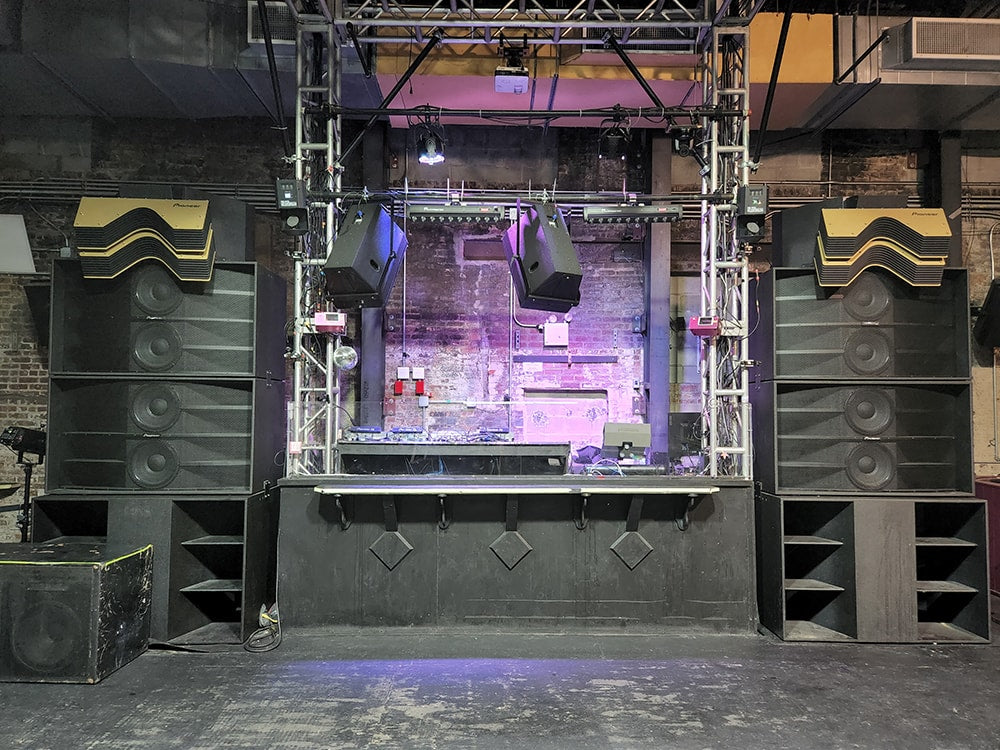
The kind of system that dreams are made of.
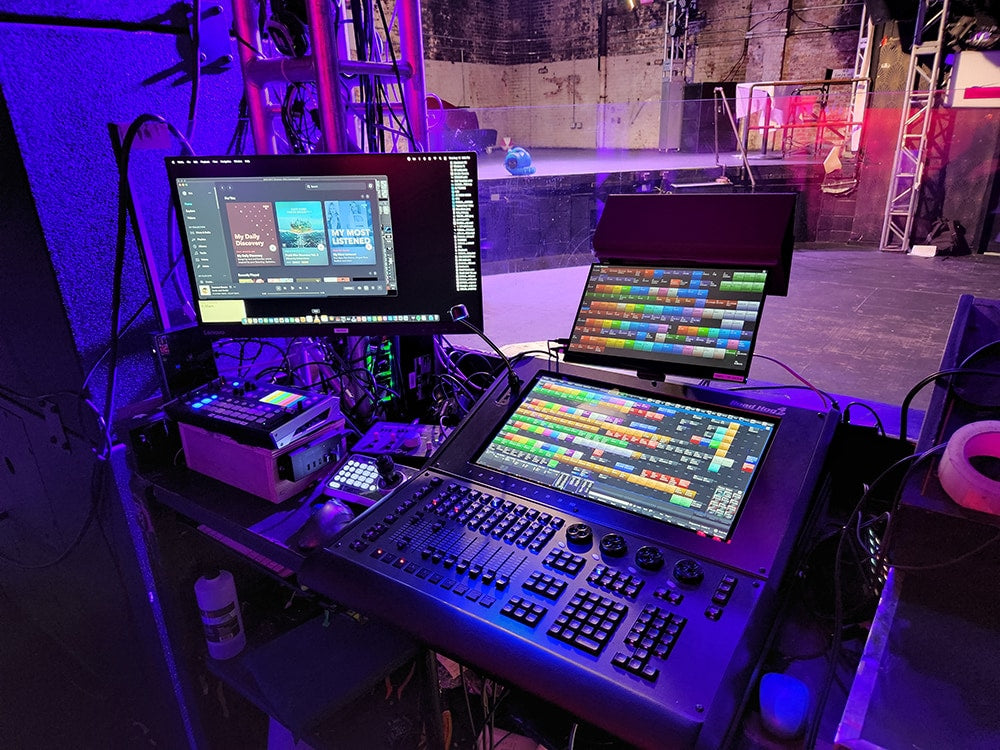
The control center for the club’s audio system.
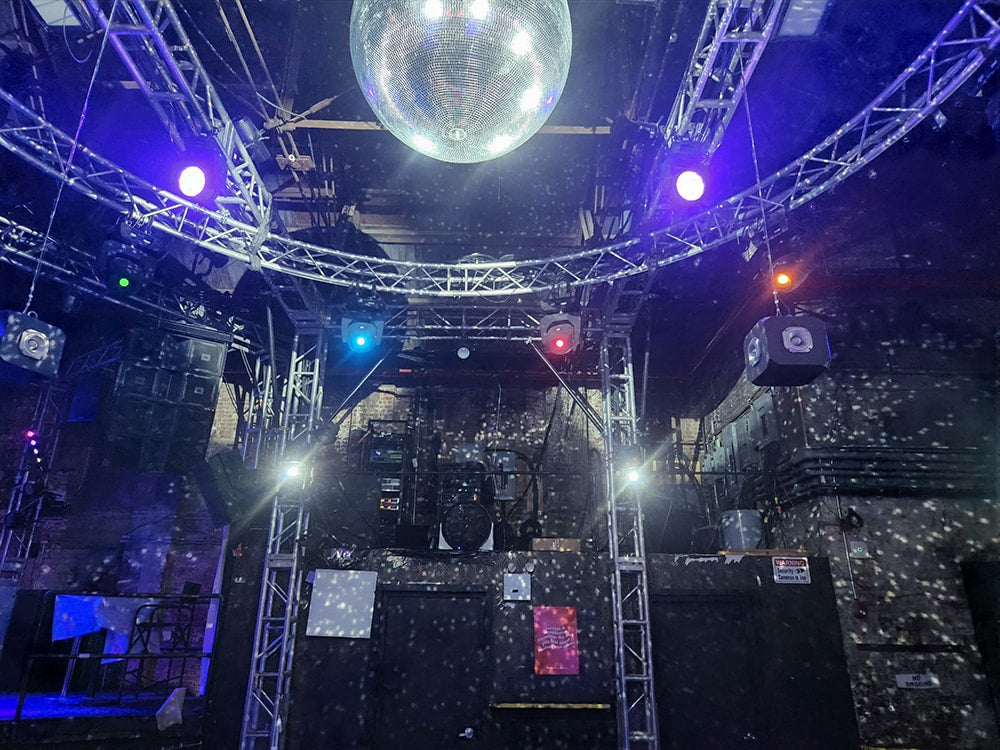
The main system is augmented by fill speakers throughout the space.
Is a well-designed club system that dissimilar from an audiophile rig at home? Not really. The machinery is different but the objectives are the same. It’s worth noting the Alex Rosner was a hi-fi man back in the 1950s when stereo systems were just beginning to take off. Here is a bit of his philosophy in a nutshell: the purpose of a sound reproduction system is to tell the truth; a loudspeaker can never be too big; and $60-per-foot speaker wire is no better than lamp cord (I apologize to audiophiles about the last part). The sheer artistry of great club sound is making it seamless and unobtrusive while remaining visceral and immersive. Now that I have a new perspective on club systems, I think the greatest downside to even the best home systems is that we don’t have Kris Anton to do all the expert tweaking, tuning, and setup.
No matter your age or musical taste, go see one of Gary Stewart’s last GS-WAVE systems and hear Kris and his guest DJs play CDs, vinyl, and files. You will not be bored. There’s always something entertaining and exciting happening there. Some events even take place early in the day. Come to think of it, Oktoberfest oompah bands and beer tents fit perfectly into my schedule.
3 Dollar Bill is located at 260 Meserole Street, Brooklyn, NY, convenient to the L subway line and just a few blocks from the Montrose Avenue Station.
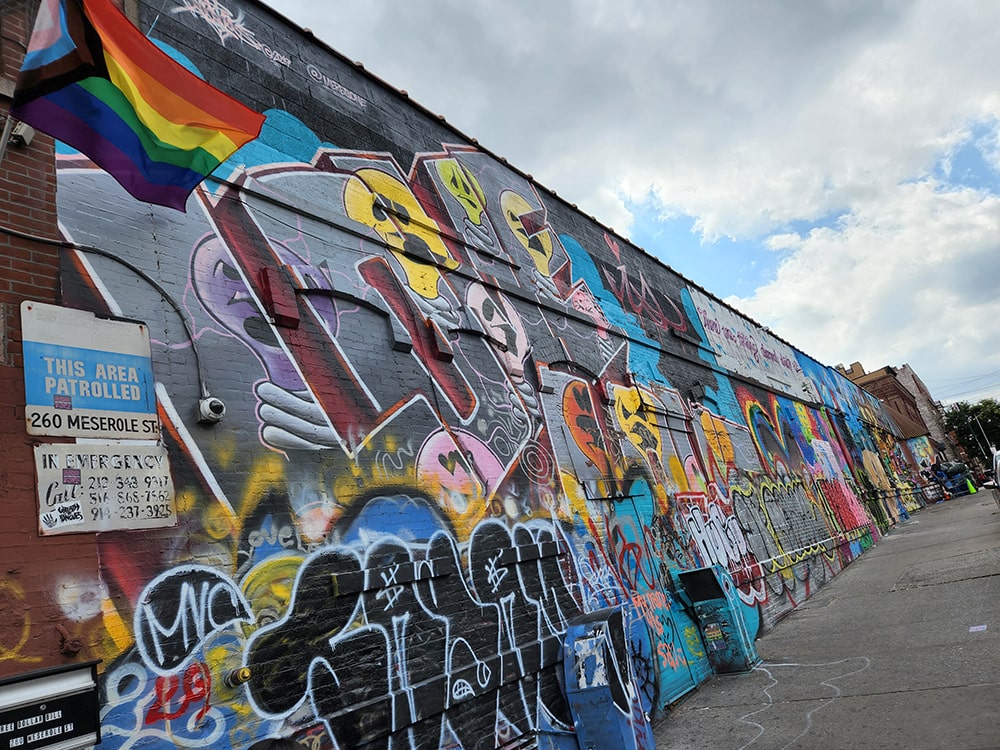
A view from 260 Meserole Street.
All images courtesy of the author except where noted.

